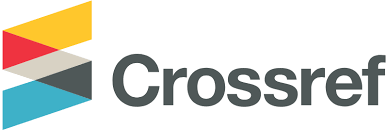Meningkatkan Kinerja Protokol Routing Aomdv Dalam Memilih Node Tetangga Berdasarkan Bandwidth, Round Trip Time, Dan Packet Loss Ratio Untuk Menemukan Rute Terbaik
Improving AOMDV Routing Protocol Choosing Neighboor Node Based on Bandwidth, Round Trip Time, and Packet Delivery Ratio to Choose the Best Route
Abstract
Mobile ad hoc network or in short MANET is a group of node that exchange the information from source node to destination node on wireless network. The main problem in MANET is on the network structure that change continously that is cause by node mobility that made route disconnected. If route disconnect there will be another route discovery processes that will take much time. AOMDV (Ad hoc On-demand Multipath Distance Vector) routing protocol works by doing broadcast Route Request Packet (RREQ) from source node to neighbor node (intermediate node) and then it will continously until it arrives to destination node. AOMDV didnt choose the best neighbor node while broadcast RREQ packet so the route constructed have high possibility to disconnected and must re-broadcast until it find stable route and it will be a long time and not effective. To solve this problem it proposed to add a modification with AOMDV routing protocol with calculation of bandwidth, round trip time, and packet loss ratio to choose neighbor node to find the best route. Routing protocol performance will tested using test parameter throughput, delay, and packet delivery ratio to choose the best neighbor node. Based on test result, the proposed modification can improve the preformance of AOMDV routing protocol. After modification, average throughput has improved 43.26 %, Packet Delivery Ratio (PDR) improved 3.15 % and average end-to-end delay reduce 31.26%.
















